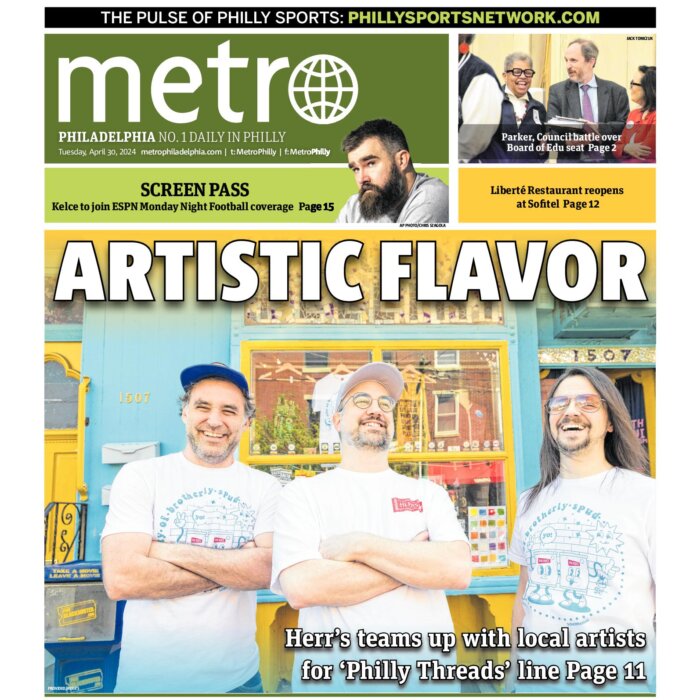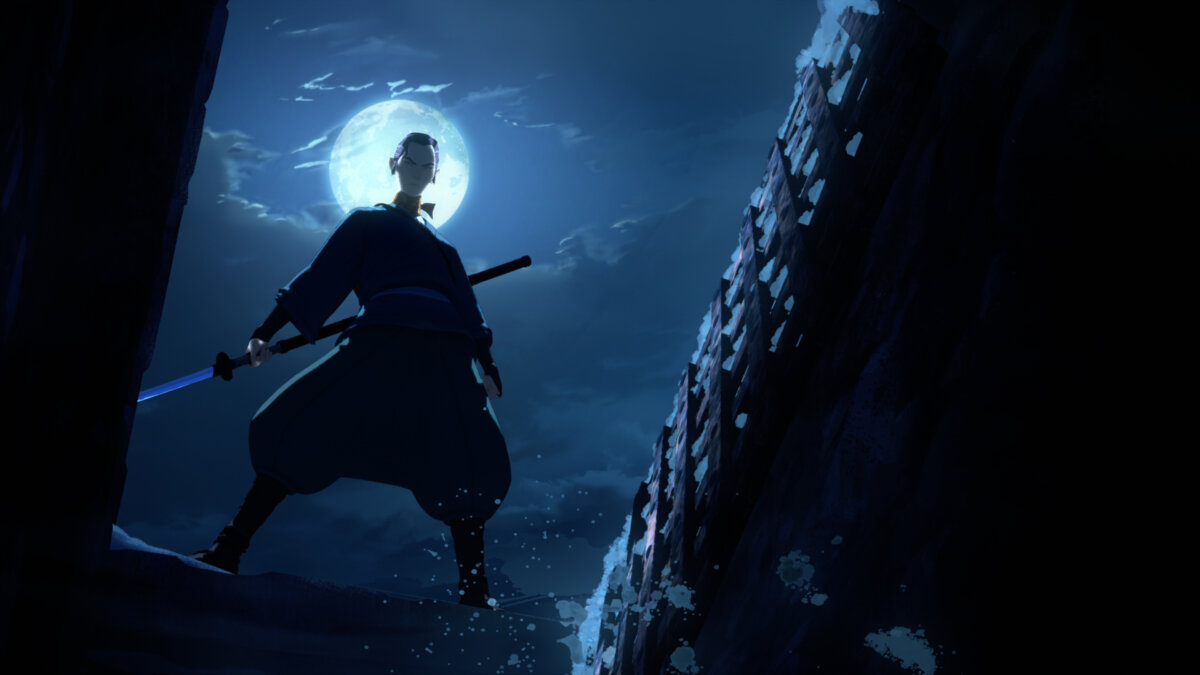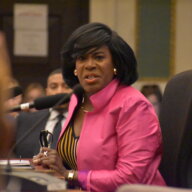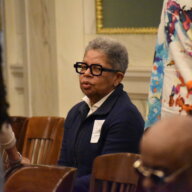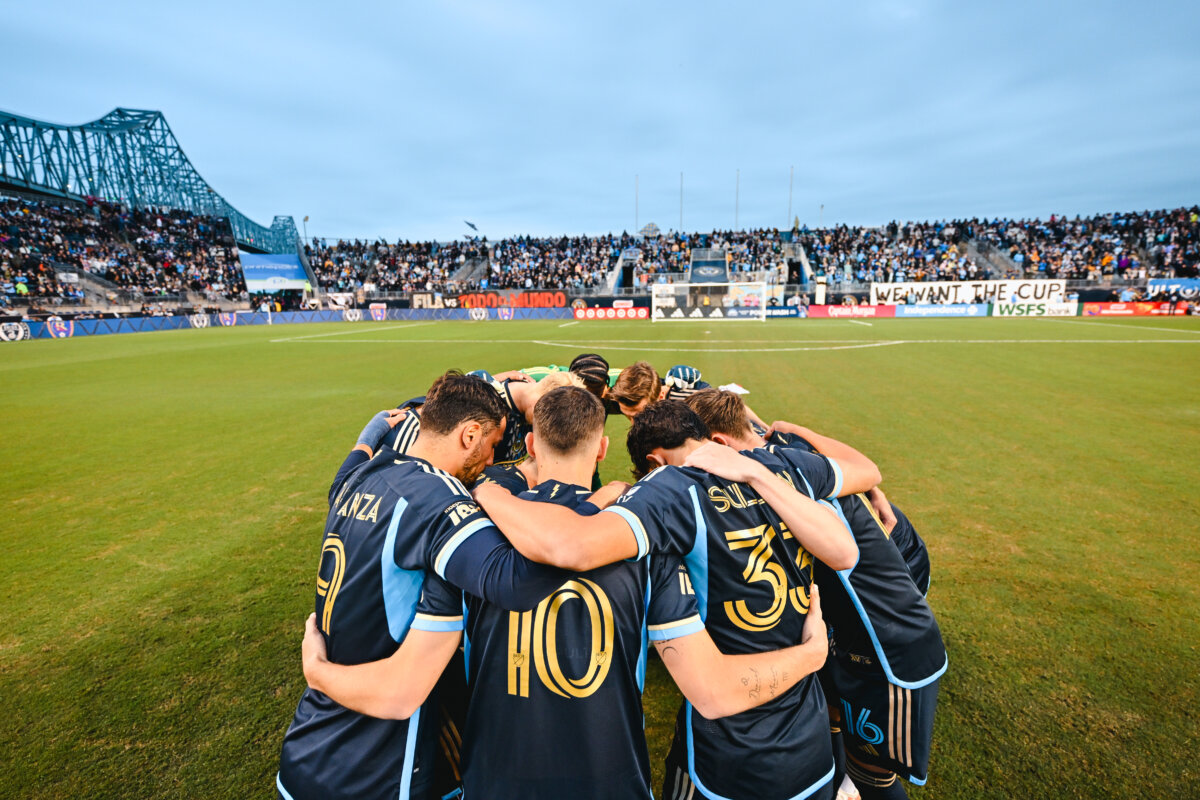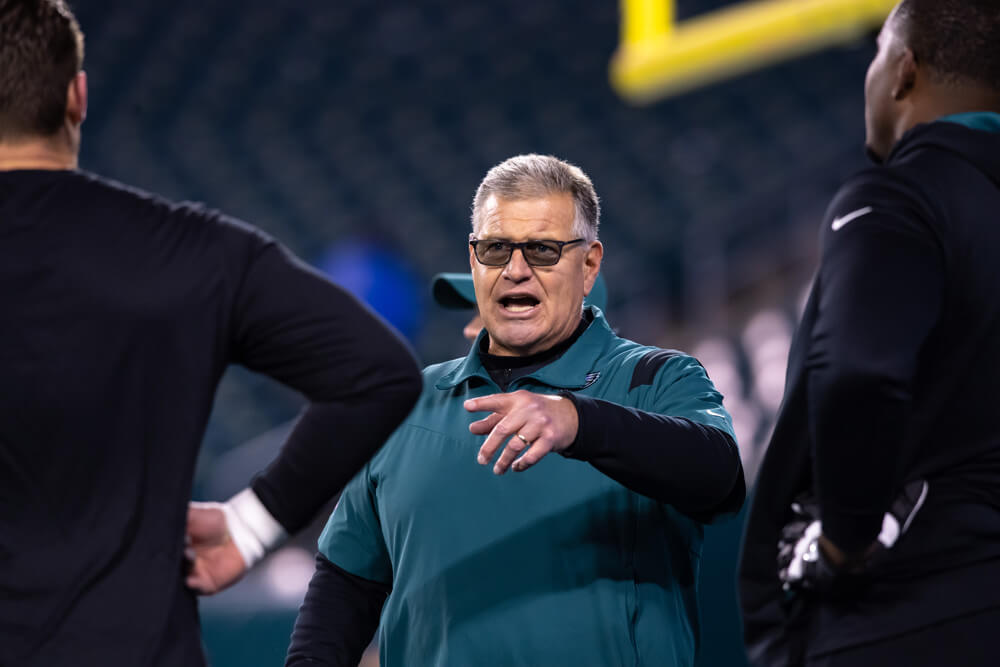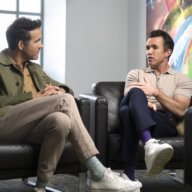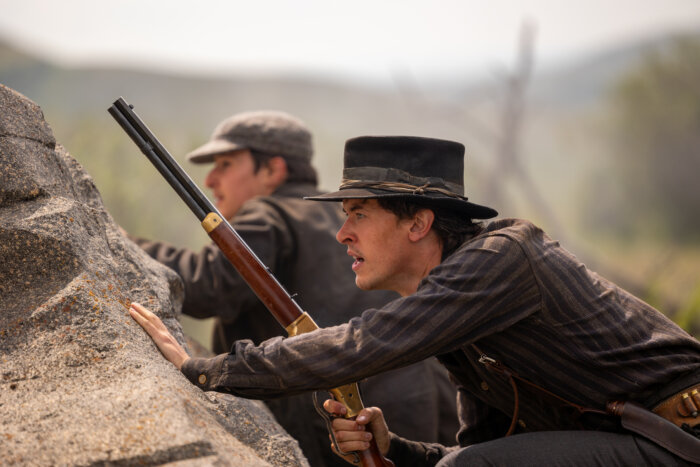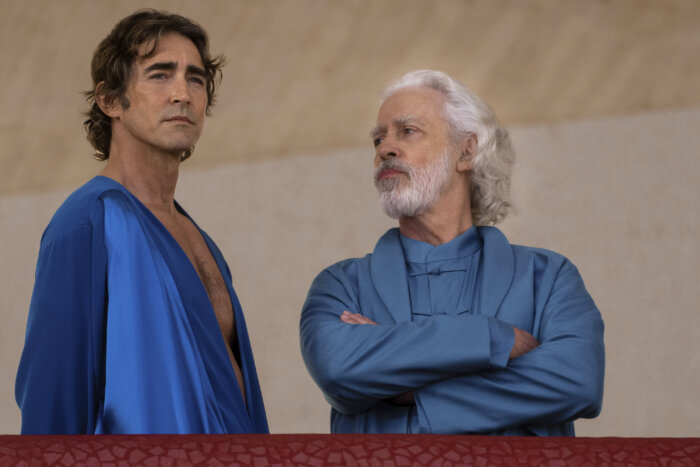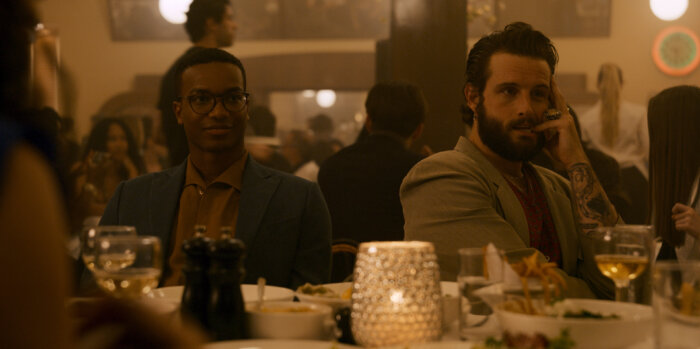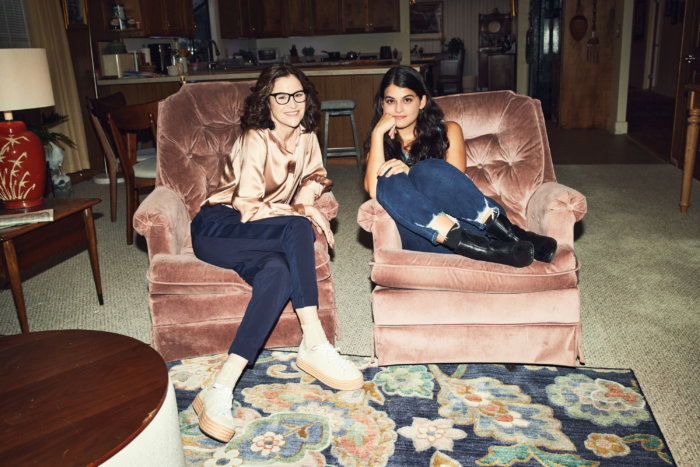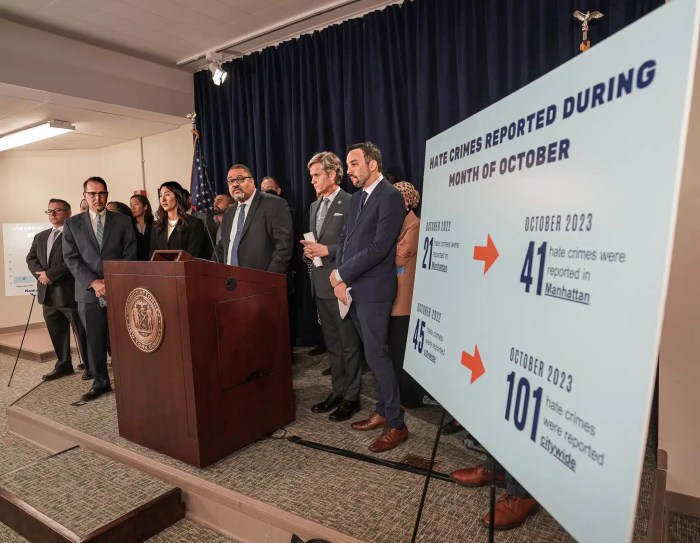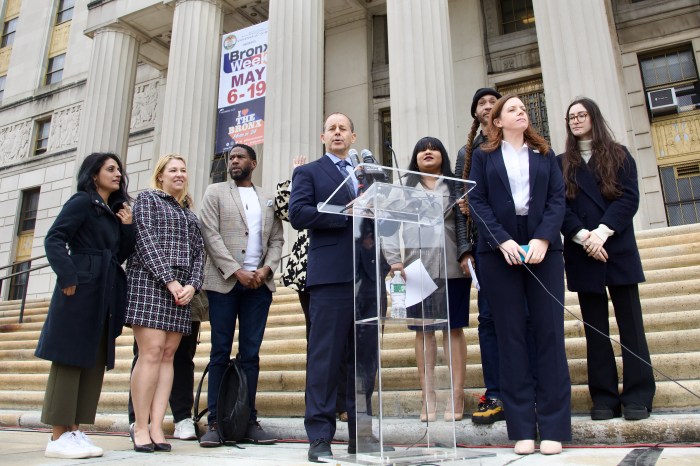Husband and wife duo Michael Green and Amber Noizumi banded together for the first time to co-create, co-write, co-executive produce and co-showrun Netflix’s latest animation series, ‘Blue Eye Samurai.’ The hour-long eight episode series follows a story of revenge for its main character, Mizu, a mixed-race master of the sword who lives a life in disguise during the Edo Period in Japan. And what unfolds on the screen is a passion project filled with emotion, action and entertaining characters.
To chat more about the series, Green and Noizumi sat down to discuss ‘Blue Eye Samurai.’
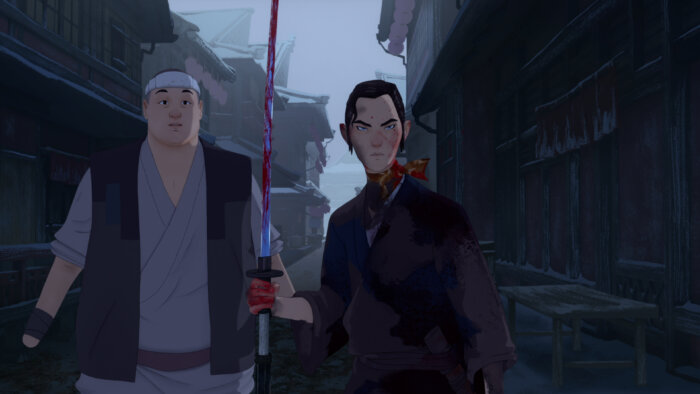
Can you tell me how the story of ‘Blue Eye Samurai’ came to be?
Noizumi: So, we have a daughter who is now over 15 years old—this is way back in the aughts, and she was born with blue eyes that I didn’t think would stick. And four months in she looked up and had these bright, beautiful blue eyes, and I was so taken aback and so excited that I texted him [Michael], “She’s got blue eyes!” He was kind of like… okay. And I had to unpick those feelings of why I was excited and didn’t even realize that I wanted her to have blue eyes and look more white, less like me, and more like him. And he called her the Blue Eye Samurai, and wrote that down as a good title. Over the ensuing 10 years or so, we started just talking about what that would’ve meant to have blue eyes first in Japan and during Japan’s Edo period where the borders were closed and that it would be seen as freakish and monstrous.
Green: Over time, we talked a lot about what a story could be. Then we came across this character of Mizu who became very real to us, and the show became a repository of just a lot of the feelings Amber shared with me about what her childhood was like growing up mixed race in a town with very few mixed race people. And sorry, I shouldn’t speak for you—
Noizumi: But, you’ve heard me tell the story.
Green: Well, [Amber] feeling like an outsider at home for not being seen as white, and then going to Japan and feeling like an outsider and being seen as not Japanese enough… And what it is to not feel like you belong anywhere really is something that a lot of people resonate with.
And when did you feel prepared to make this show, since it had been on your minds for quite some time?
Noizumi: When we were thinking about how we would tell this tale and be able to create this story with the scope it required, we couldn’t see how it would be done or how it would possibly be accomplished… Until the idea of animation came about. Before that, we hadn’t really seen adult animation like this, and then as we started seeing more appetite for adult animated shows and Netflix had just created an entire department dedicated to adult animation, that’s when the idea really took off.
Green: We then instantly knew how to do the show we’d been talking about and we didn’t have to make it fit into a box of what a live action television version of it would be. We could just do our grandest ambitions.
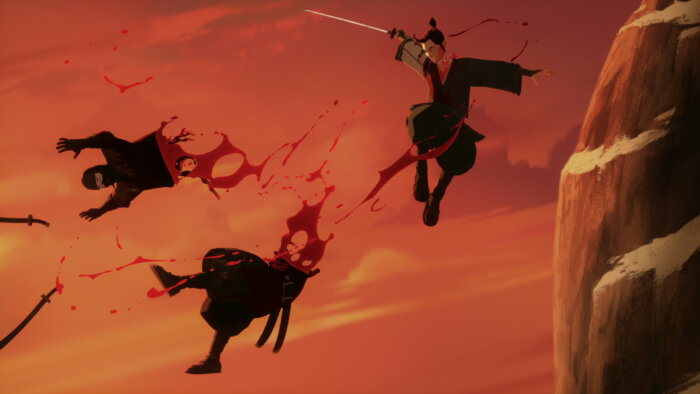
Tell me more about Mizu. How did you find this journey for her throughout the whole show?
Noizumi: I think Mizu just always had to be Mizu based on the restrictions that were foisted upon her by society at the time. And when you look at her goals, her wants, her needs and the external forces, this is always who she had to be. The work we did was creating the softer underbelly of what she wants and how she responds to those forces, but this laser focused idea of I must be the best to get what I need, that was always just a given.
A lot of things were done differently in terms of production and animation, and the show looks unlike any animation show I’ve ever seen. What unique aspects came out of the writing on ‘Blue Eye Samurai’?
Green: On the script level, we were very tough on ourselves to make sure these scripts that we put out to a team that was going to board them for us, edit together, and then animate, that they were tight and they were ready to go. We really acted as our own network and studio, giving ourselves rounds of notes so that the scripts were just unimpeachable, because we knew we would be asking so many gifted artists to work so hard on it. All of it was enjoyable, working with board artists, talking with them about the story, apologizing when we asked ’em to do things again because it didn’t quite land the emotion that was necessary, directing our actors, editing, reediting… And then we had an incredible education of learning how animation works with our team, just bit by bit starting every meeting going, “Hey, we’re the least qualified here, but yet we’re in charge…sorry, and please stand by as we ask really dumb questions.” They’re very patient with us because show running in live action is analogous to show running in animation, but it’s not a one for one. And now at the end of a season of it, we were qualified to do it.
It’s such an emotional ride packaged in an action tale. How do you get the audience invested in the characters with so much going on action-wise?
Green: That’s the only way to make people care, if their emotions are engaged. And part of our pitch of this in the beginning was, this is going to be an animated show, but we’re going to live in the closeup like you would in a live action show, and that we want our audience to have as high a degree in attachment to these characters as if they were cast with movie stars. And that meant designing faces that could emote that way, and giving them the time and resources, but also cutting in a way. We didn’t do what a lot of action forward animation does.
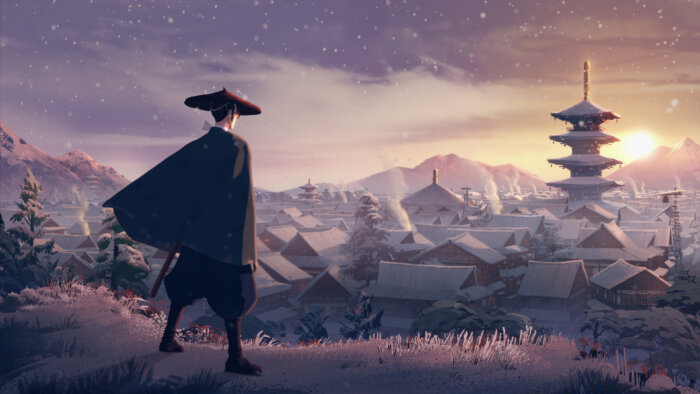
Amber, with this being your first writing role in entertainment, did anything stand out to you or surprise you?
Noizumi: I imagined it being arduous work, but it was not arduous because I loved doing it. It was an exploration of myself and I got to do it with my partner in life, and it’s been such a passion project that I enjoyed it a lot more than I thought I would.
Catch ‘Blue Eye Samurai’ on Netflix, Nov. 3.
